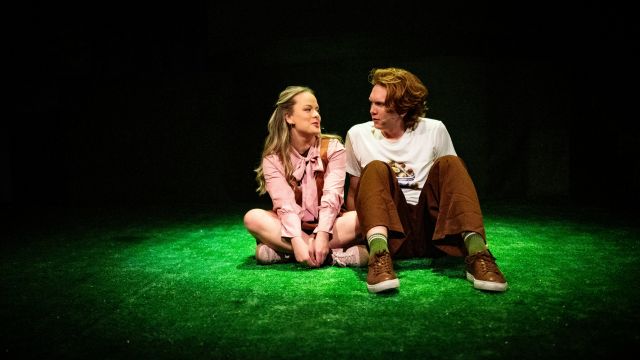Love and Information
In this sparkling, complex fast-moving production of Caryl Churchill’s characteristically original take on The Information Age, director Belle Hansen, her collaborators, and her multi-talented cast ask multiple provocative questions about the facts, the fictions, the gossip, and the opinions that we tell each other. Or else it’s the technological deluge of information that comes overwhelmingly from the media, or out of the sky or over the horizon. Real news, fake news. Science or superstition? What do we make of it all, and who are we to make anything of it? What do we choose to believe or interpret, mediated or not by love in all its forms and meanings? And if there’s no love, no feeling, no emotion, no context, to make sense of it all, where does that leave us?
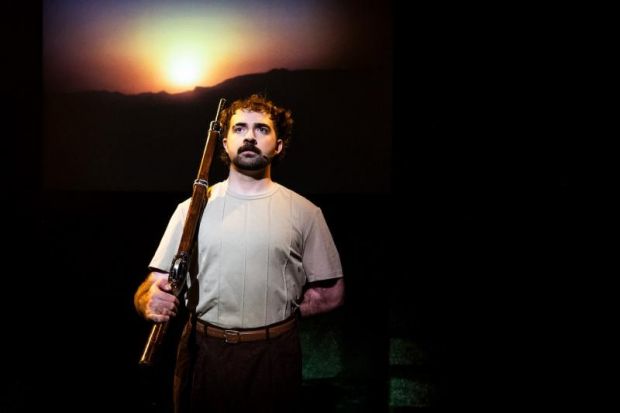
Churchill’s text leaves enormous scope for - or places enormous demands on - cast, director and all who work together to create the discombobulating spectacle that Love and Information is. Here, they rise to the challenge in a most impressive way. For those unfamiliar with the play, and to emphasise the scope and achievement of this production, here’s what Churchill provides...
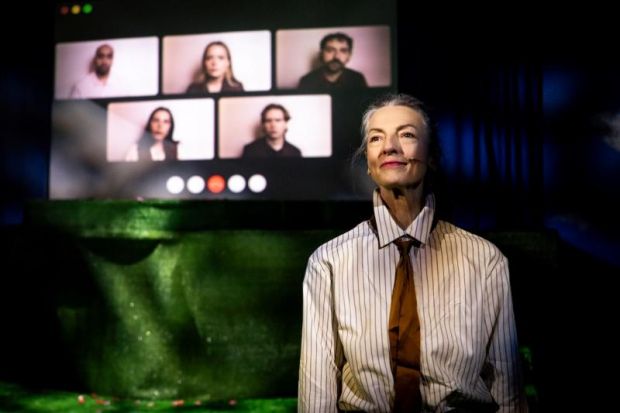
Love and Information runs about ninety minutes but has over fifty scenes. There are seven sections which must be played in order – but the scenes within each section can be played in any order (because there is no cause-and-effect scene to scene). Plus, there are ‘random’ scenes that may be placed... wherever. Scenes last from less than a minute to several minutes. No scene reaches any kind of resolution. Context – i.e. before and after, cause and consequence - is up to our imaginations.
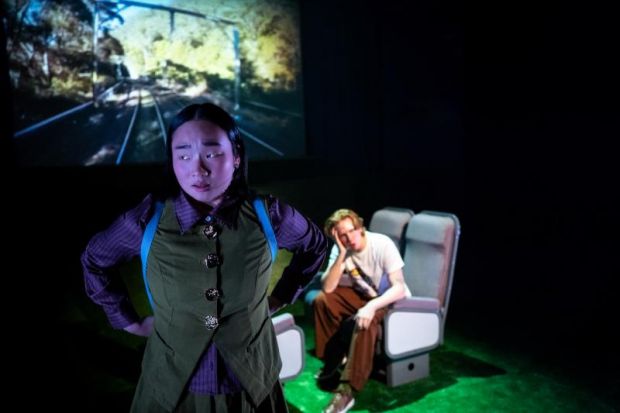
There are over a hundred characters, but no character is named or recurs or has a story. So, each of the cast of eight (in this production) has to play fourteen or fifteen characters – and convince us they are different every time they appear on stage for another encounter. This cast – Iopu Auva’a, Jane Edwina Seymour, Jack Francis West, Junghwi Jo, Charlie Morris, Felix Star, Emma Woods and Sean Yuen Halley – achieve these things with different walks, voices, demeanours and multiple – and very rapid - costume changes. What all of them have to achieve - in a second - is a believable character who appears and disappears. They are all therefore quite amazing - all distinctly different, highly talented and expertly cast – four of them are beautiful dancers too. It’s difficult at first to get the rapid character switches clear. We tend to think, ‘Oh, here’s that woman again...’ But it’s not that woman again. It’s another woman in another situation.
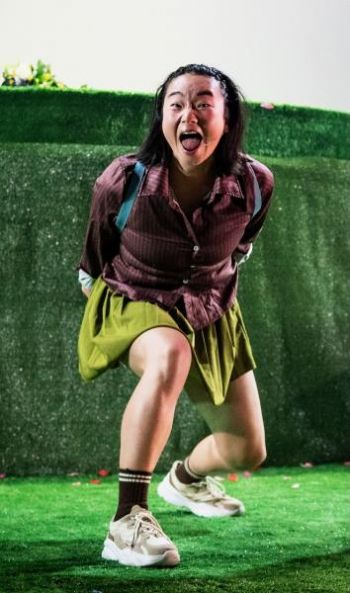
Director/choreographer Belle Hansen, always an impressive director, has had to choose the order in which the scenes run, and who plays what – and she pulls it all together with great verve and achieves a rhythm and a pace that never slackens. If each scene is ‘information’ they could risk overwhelming us – but that’s just like the world we live in. That’s the point. Yes, with over fifty scenes, some do fall flat, some are not at all memorable (like skimming a newspaper or a website), many bewilder or frustrate us as much as they bewilder or frustrate the characters. A woman tries to tell a boy that she is his mother. What is he to do with that information? What did the boy believe before? And now? A young man falls hopelessly in love with a body-less digital image and cannot be dissuaded... And then?
Harry Gill’s highly inventive, flexible set design, with rotatable flats that can become a big screen for projections, atop a grassy platform with steps down to the front, is able to suggest rooms, streets, laboratories, beaches and more. Sidney Younger’s lights render abrupt changes of mood and locale. Sound designer Jack Burmeister supplies sound for phenomena no one understands, but he also has had the enormous task of providing musical touches for just about all the multiple scenes – and he achieve that with great subtlety, each selection so appropriate that they enhance and never distract.

Whatever Love and Information is, this production is never boring. The cast’s achievement is awe inspiring even if they have no narrative or ‘psychology’ to energise their moments. What we carry away is the overall sense of the difficulty of making sense of our world. This idiosyncratic play races along – blackly, ruefully funny as well as evocative, stimulating, painful, insightful and constantly surprising us that there can be so many variations on our struggles with ‘information’.
Michael Brindley
Photographer: Steven Mitchell Wright
Subscribe to our E-Newsletter, buy our latest print edition or find a Performing Arts book at Book Nook.

